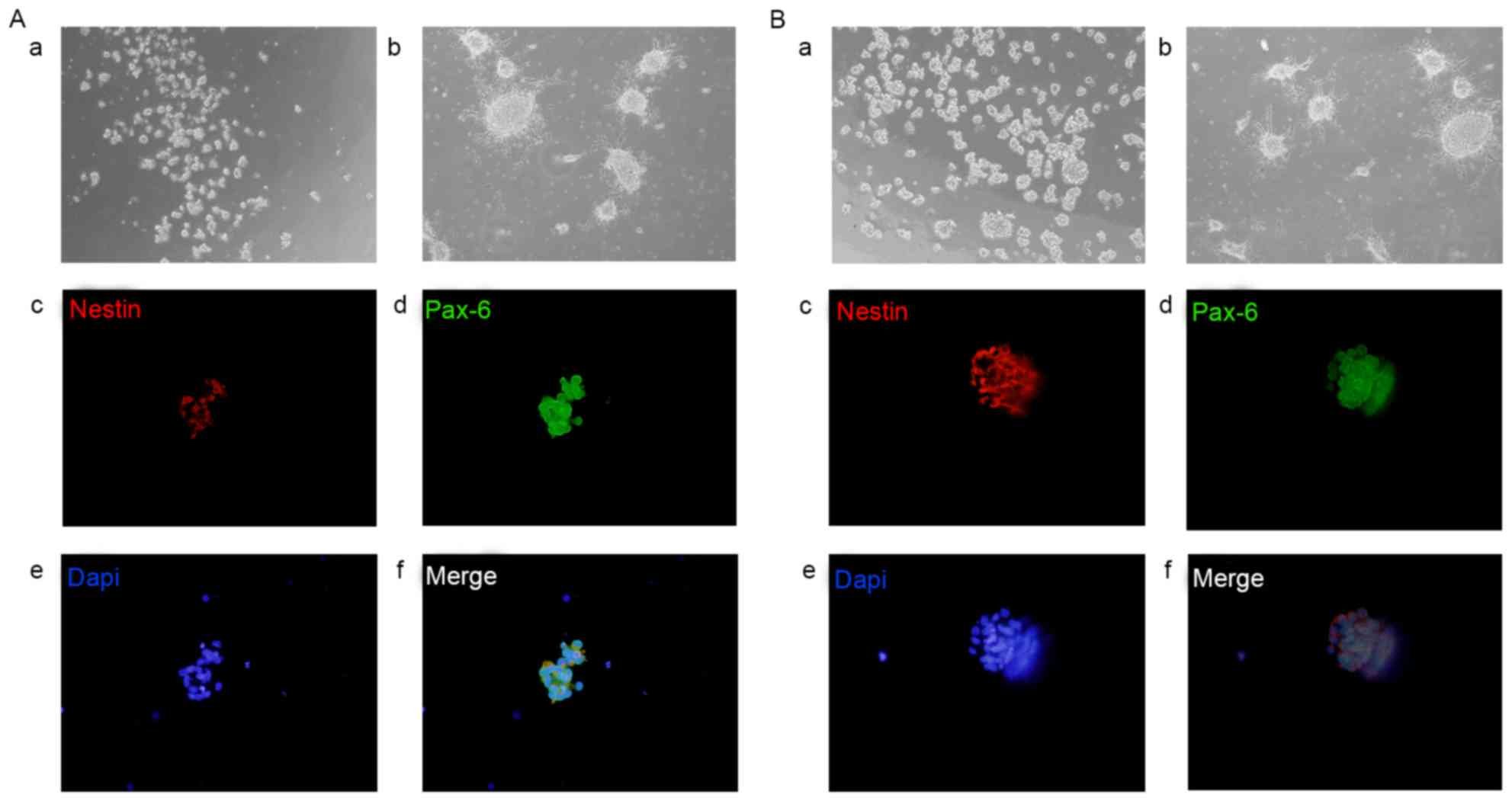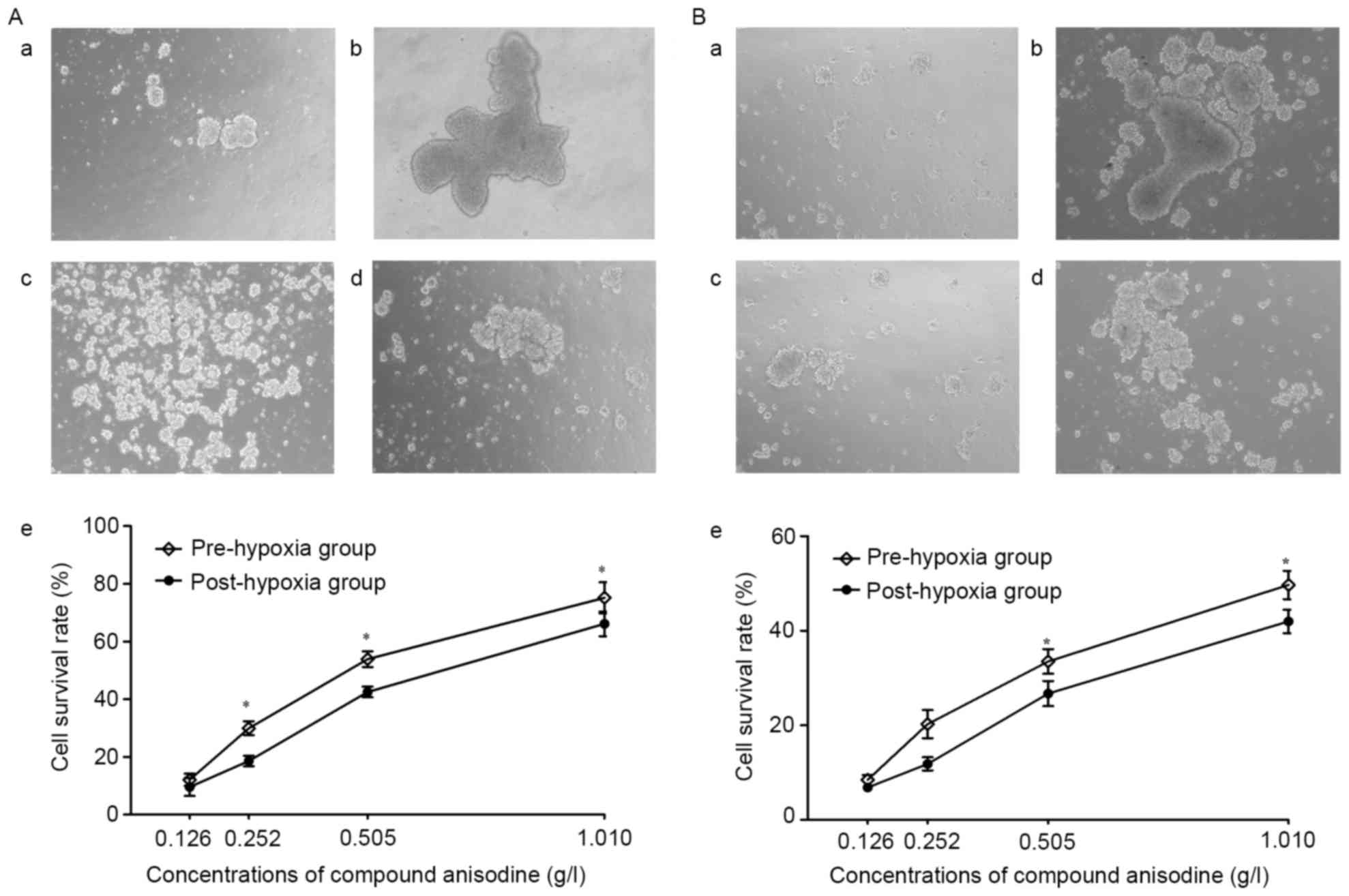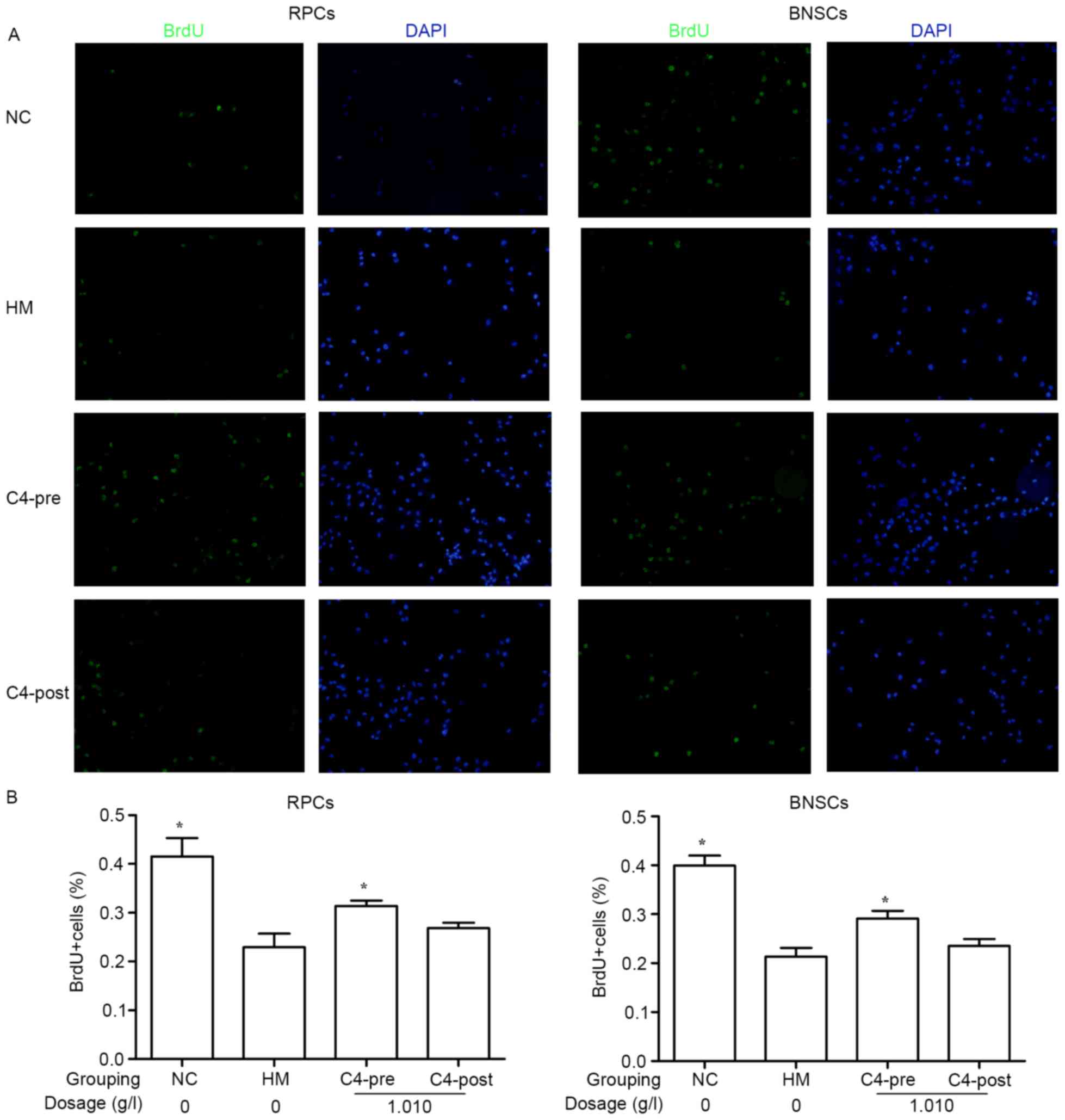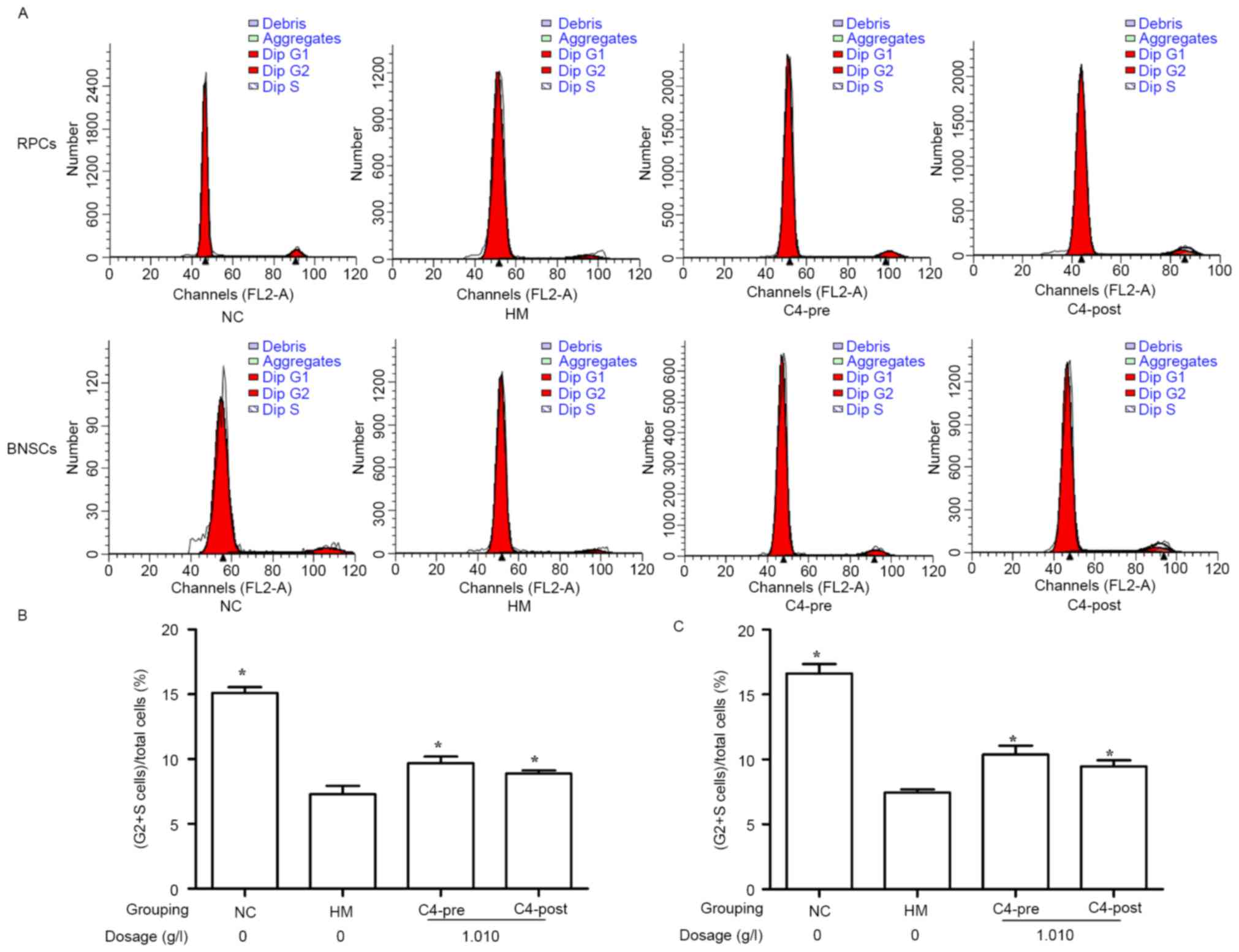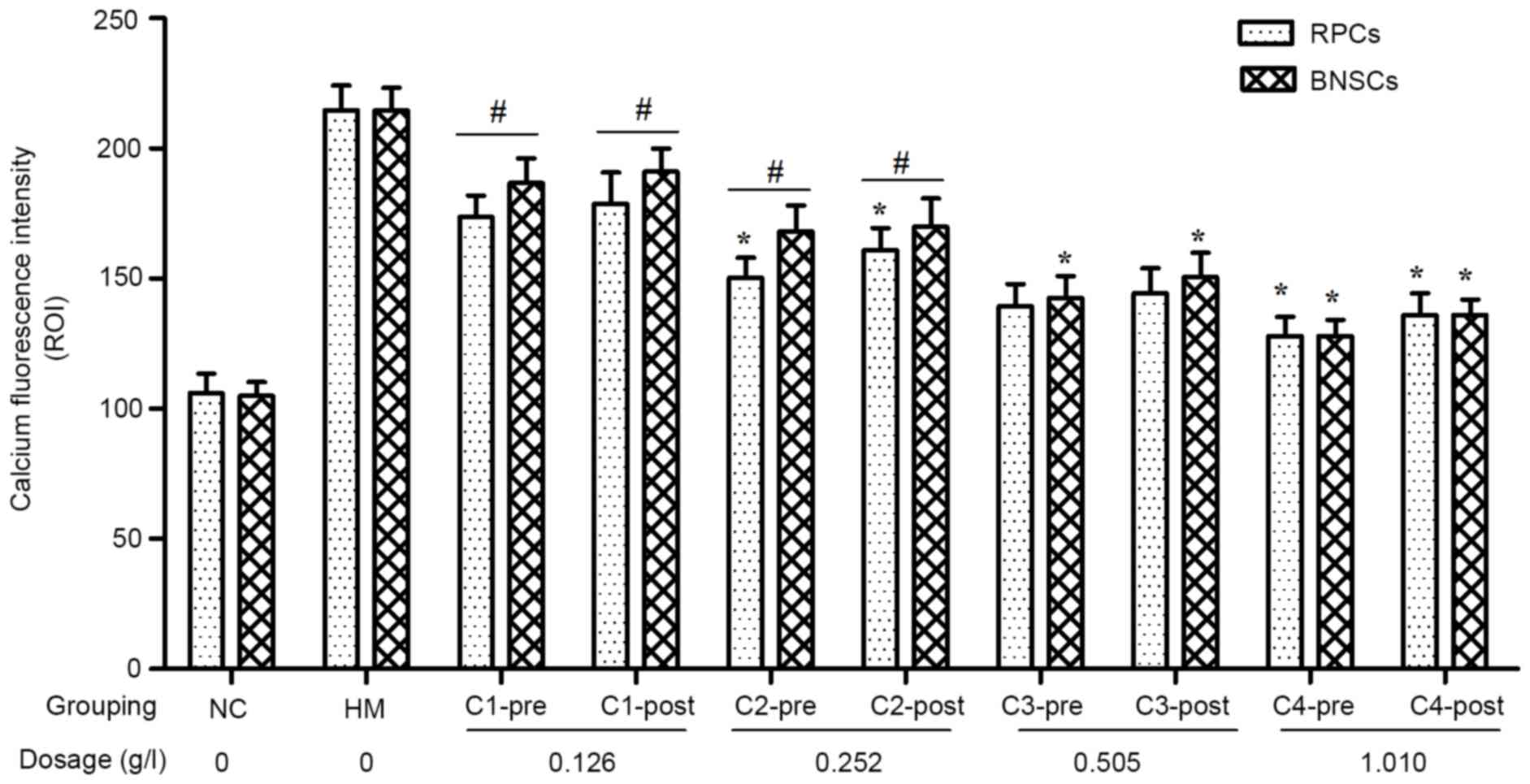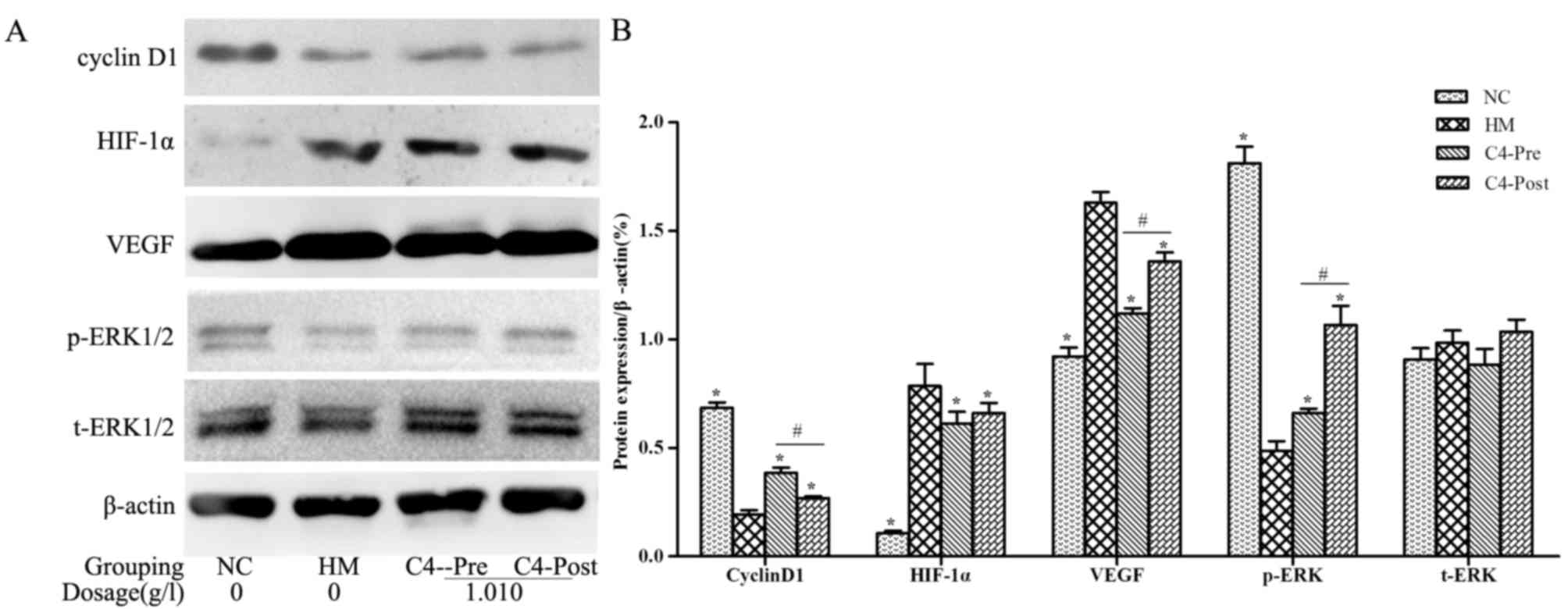Compound anisodine affects the proliferation and calcium overload of hypoxia-induced rat retinal progenitor cells and brain neural stem cells via the p-ERK1/2/HIF-1α/VEGF pathway
- Authors:
- Published online on: May 31, 2017 https://doi.org/10.3892/etm.2017.4528
- Pages: 600-608
-
Copyright: © Wang et al. This is an open access article distributed under the terms of Creative Commons Attribution License.
Metrics: Total
Views: 0 (Spandidos Publications: | PMC Statistics: )
Total PDF Downloads: 0 (Spandidos Publications: | PMC Statistics: )
Abstract
As a Traditional Chinese Medicine, compound anisodine (CA) has previously been shown to regulate the vegetative nervous system, improve microcirculation and scavenge reactive oxygen species, and has been commonly utilized as a neuroprotective agent to treat ischemic optic neuropathy and choroidoretinopathy. The present study aimed to investigate the neuroprotective effects of CA on the proliferation and calcium overload of hypoxia‑induced rat retinal progenitor cells (RPCs) and brain neural stem cells (BNSCs) harvested from neonatal Sprague‑Dawley rats. Cells were treated with CA at 0.126, 0.252, 0.505 or 1.010 g/l for four hours prior to or after hypoxia (<1% oxygen) for four h, followed by re‑oxygenation for four hours; a normal control group and a CA‑untreated hypoxia model group were also included. An MTT assay demonstrated that the cell viability was markedly improved following treatment with 0.126‑1.010 g/l CA, compared with that in the hypoxia model group (P<0.05). Bromodeoxyuridine (BrdU) immunocytochemical staining and flow cytometry indicated that after culture in hypoxia for 4 h, the number of BrdU+ RPCs and BNSCs was significant decreased, as well as the cell population in S+G2 phase of the cell cycle, which was significantly attenuated by treatment with 1.010 g/l CA for 4 h prior to hypoxia (P<0.05). Furthermore, laser scanning confocal microscopy showed that the intracellular calcium concentration in hypoxia‑cultured RPCs and BNSCs was markedly increased, which was attenuated by 0.126‑1.010 g/l CA in a concentration‑dependent manner (P<0.05). Furthermore, western blot analysis demonstrated that after hypoxia, the protein levels of hypoxia‑inducible factor (HIF)‑1α and vascular endothelial growth factor (VEGF) were upregulated in RPCs and BNSCs, whereas phosphorylated extracellular signal‑regulated kinase (phospho‑ERK 1/2Thr202/Tyr204) and Cyclin D1 were downregulated; of note, treatment with 1.010 g/l CA significantly attenuated these changes (P<0.05). The results of the present study suggested that CA may improve the proliferation and inhibit calcium overload in hypoxia‑induced RPCs and BNSCs by altering the protein levels of Cyclin D1 as well as signaling through the p‑ERK1/2/HIF‑1α/VEGF pathway.



